Upper Control Arm Ball Joint Replacement Light Duty Suspension
Tools Required
J 23742 Ball Joint Separator
Removal Procedure
- Raise the vehicle. Support the vehicle with suitable safety stands.
- Support the lower control arm with a safety stand.
- Remove the tire and wheel. Refer to Tire and Wheel Removal and Installation in Tires and Wheels.
- Remove the brake caliper. Refer to Brake Caliper Replacement in Disc Brakes.
- Remove the nut and the bolt that retains the wheel speed sensor harness bracket and brake hose (1) to the upper control arm.
- Remove the upper control arm from the vehicle. Refer to Upper Control Arm Replacement .
- Center punch the rivets retaining the ball joint to the control arm.
- Use a 3.175 mm (1/8 in) drill in order to cut a 6.35 mm (1/4 in) deep hole in the center of each rivet.
- Drill away the rivet heads. Use a 12.7 mm (1/2 in) drill.
- Punch the rivets out. Use a small punch.
- Remove the ball joint.
- Install a new upper ball joint to the upper control arm.
- Position the 4 attaching bolts and nuts.
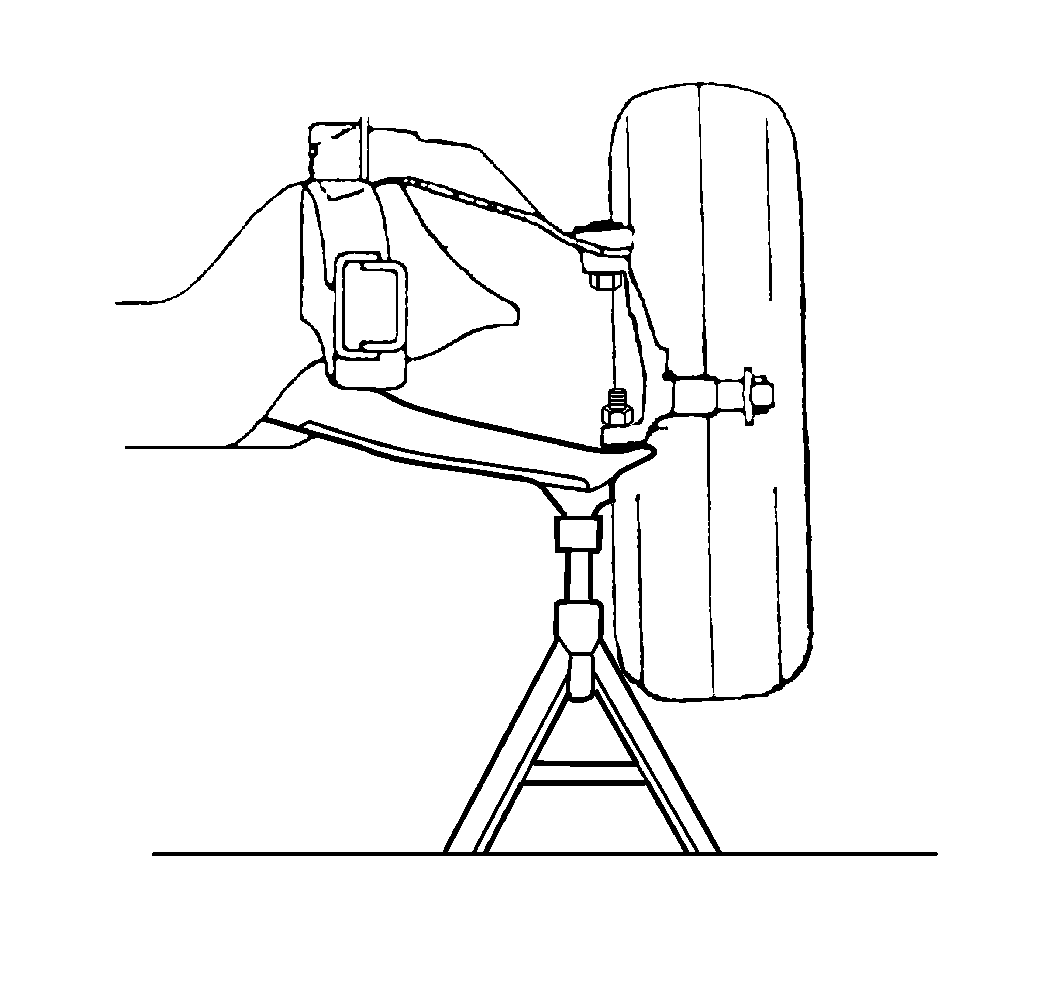
Caution: To avoid any vehicle damage, serious personal injury or death when major components are removed from the vehicle and the vehicle is supported by a hoist, support the vehicle with jack stands at the opposite end from which the components are being removed and strap the vehicle to the hoist.
Caution: Floor jack must remain under the lower control arm during removal and installation to retain the lower control arm in position. Failure to do so could result in personal injury.
Notice: Support the caliper with a piece of wire to prevent damage to the brake line.
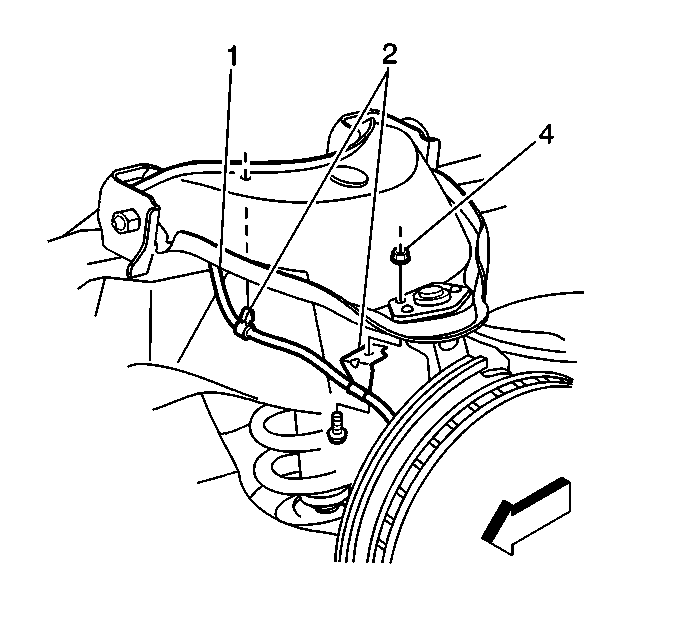
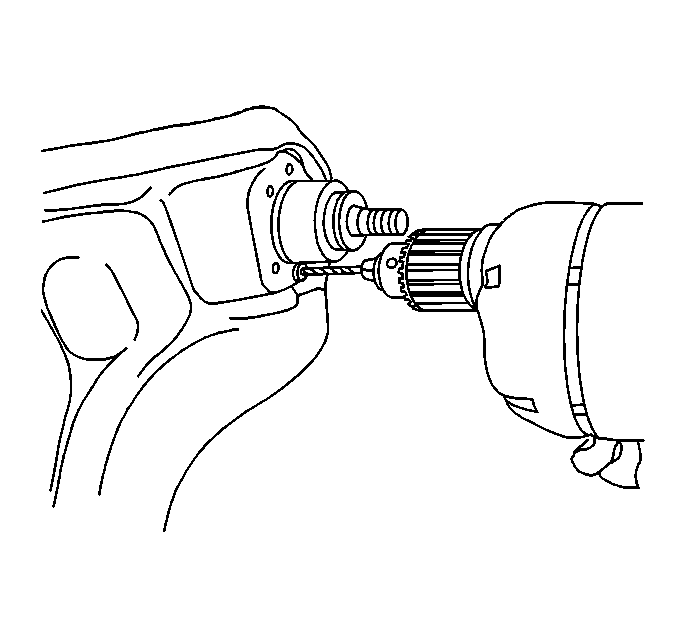
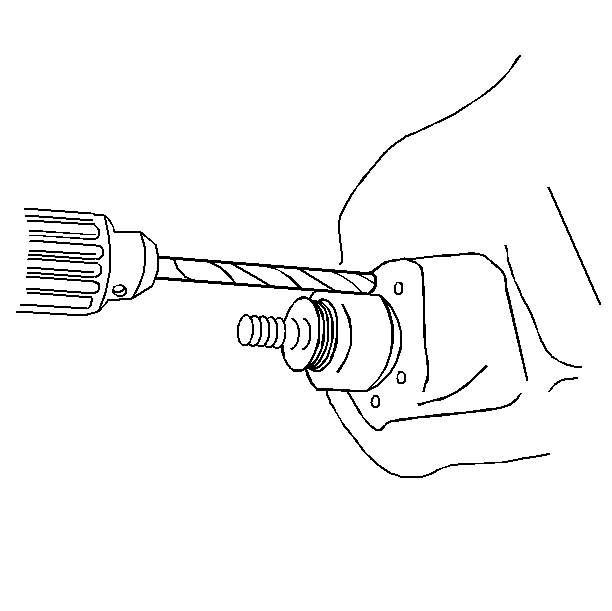

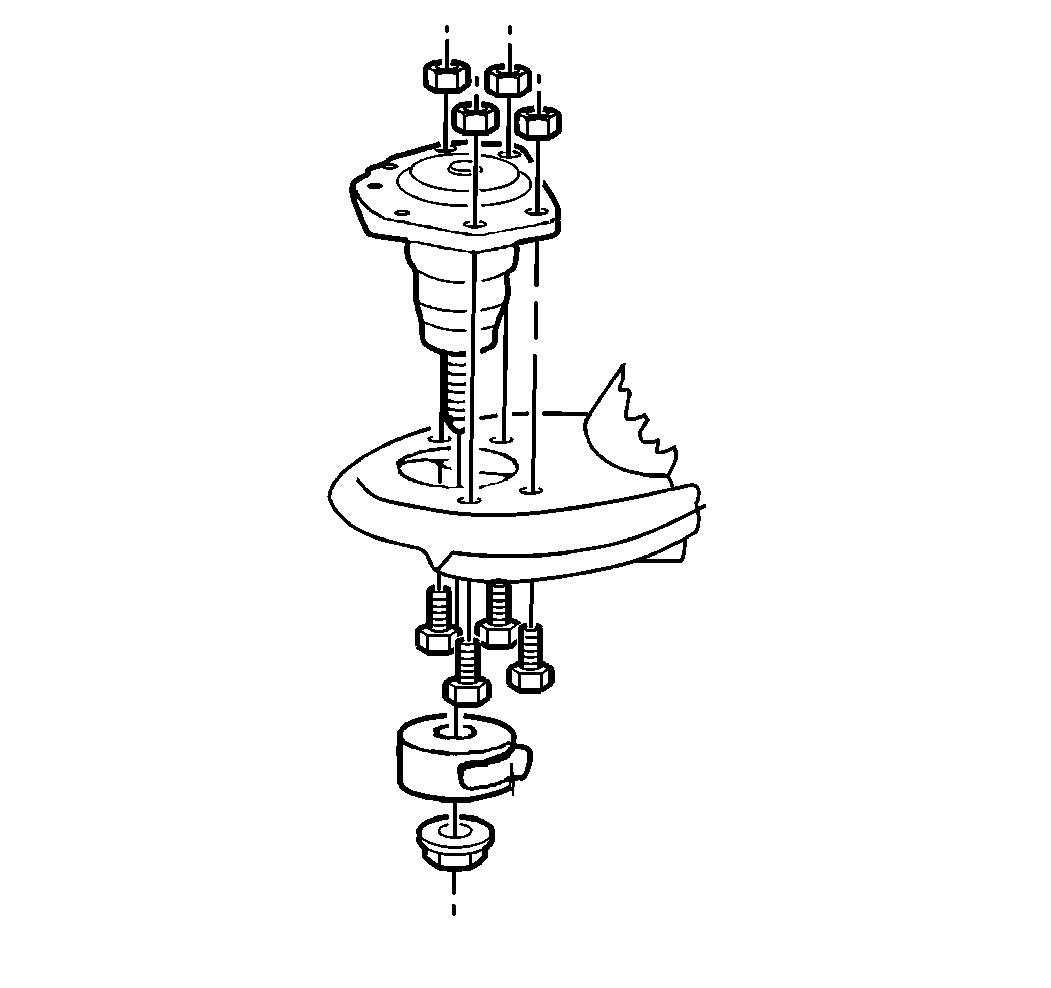
Notice: Use the correct fastener in the correct location. Replacement fasteners must be the correct part number for that application. Fasteners requiring replacement or fasteners requiring the use of thread locking compound or sealant are identified in the service procedure. Do not use paints, lubricants, or corrosion inhibitors on fasteners or fastener joint surfaces unless specified. These coatings affect fastener torque and joint clamping force and may damage the fastener. Use the correct tightening sequence and specifications when installing fasteners in order to avoid damage to parts and systems.
Tighten
Tighten the upper ball joint retaining nuts to 24 N·m (18 lb ft).
Installation Procedure
- Install the upper control arm to the vehicle. Refer to Upper Control Arm Replacement .
- Install the nut and the bolt that retains the wheel speed sensor harness (1) and brake hose bracket (2) to the upper control arm.
- Install the front brake caliper. Refer to Brake Caliper Replacement in Disc Brakes.
- Install the tire and wheel . Refer to Tire and Wheel Removal and Installation in Tires and Wheels.
- Check the running clearance at all of the suspension components.
- Remove the safety stands.
- Lower the vehicle.
- Check the front wheel alignment. Refer to Wheel Alignment Specifications in Wheel Alignment.

Tighten
Tighten the wheel speed sensor and brake hose bracket retaining nut
to 17 N·m (13 lb ft).
Upper Control Arm Ball Joint Replacement Heavy Duty Suspension
Tools Required
J 23742 Ball Joint Separator
Removal Procedure
- Raise the vehicle. Support the vehicle with safety stands.
- Support the lower control arm with a safety stand.
- Remove the tire and wheel. Refer to Tire and Wheel Removal and Installation in Tires and Wheels.
- Remove the brake caliper. Refer to Brake Caliper Replacement in Disc brakes.
- Remove the nut and the bolt that retains the wheel speed sensor harness bracket to the upper control arm.
- Center punch the rivets retaining the ball joint to the control arm. Use a 3.175 mm (1/8 in) drill in order to cut a 6.35 mm (1/4 in) deep hole in the center of each rivet.
- Drill away the rivet heads. Use a 12.7 mm (1/2 in) drill.
- Punch the rivets out using a small punch.
- Remove the upper ball joint cotter pin and retaining nut from the ball joint stud.
- Using the J 23742 separate the ball joint from the steering knuckle.
- Remove the J 23742 .
- Pull the stud away from the knuckle.
- Remove the ball joint.

Caution: To avoid any vehicle damage, serious personal injury or death when major components are removed from the vehicle and the vehicle is supported by a hoist, support the vehicle with jack stands at the opposite end from which the components are being removed and strap the vehicle to the hoist.
Notice: Support the caliper with a piece of wire to prevent damage to the brake line.
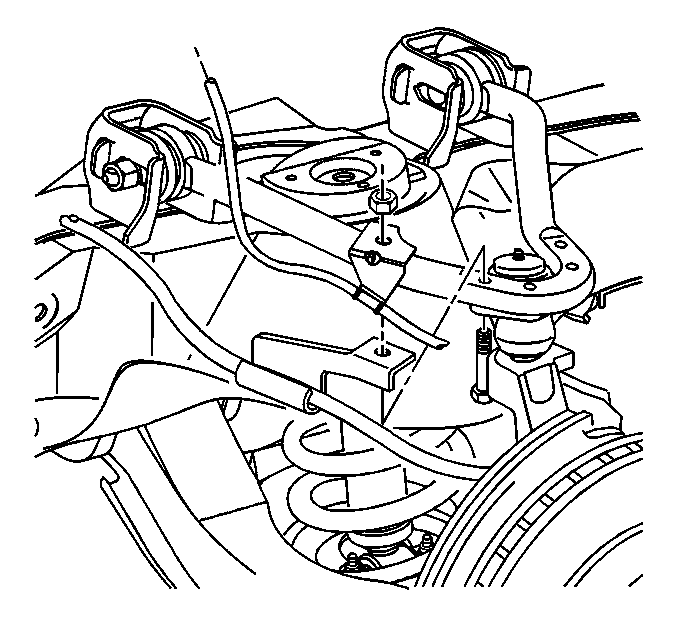

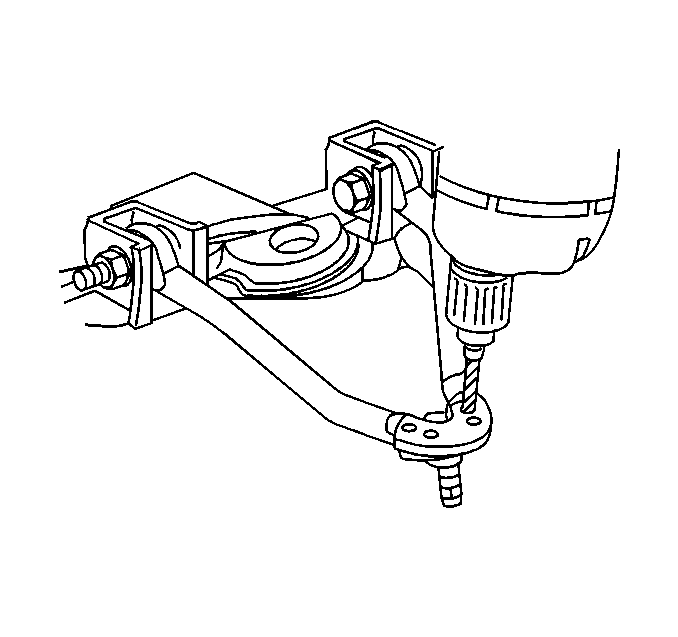

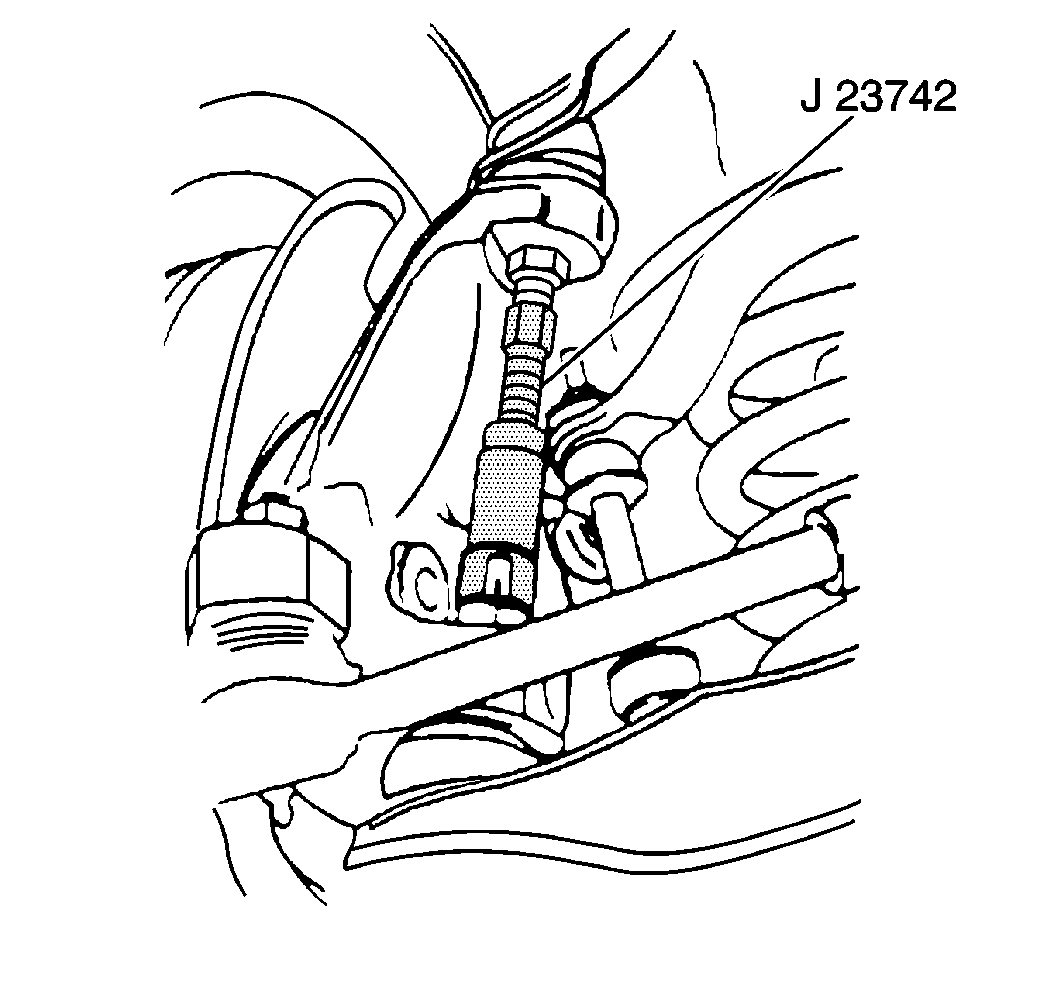
Installation Procedure
- Install the new upper ball joint to the upper control arm.
- Install the 4 attaching bolts and nuts.
- Install the upper ball joint to the steering knuckle.
- Install the upper ball joint to the steering knuckle retaining nut.
- Install a new cotter pin. Align the slot in the nut (1) with the hole in the stud (2).
- Bend the cotter pin as shown to prevent the pin from working loose.
- Install the nut and the bolt that retains the wheel speed sensor harness bracket to the upper control arm.
- Install the front brake caliper. Refer to Brake Caliper Replacement in Disc Brakes.
- Install the tire and wheel. Refer to Tire and Wheel Removal and Installation in Tires and Wheels.
- Remove the safety stands.
- Lower the vehicle.
- Check the front wheel alignment. Refer to Wheel Alignment Specifications in Wheel Alignment.

Notice: Use the correct fastener in the correct location. Replacement fasteners must be the correct part number for that application. Fasteners requiring replacement or fasteners requiring the use of thread locking compound or sealant are identified in the service procedure. Do not use paints, lubricants, or corrosion inhibitors on fasteners or fastener joint surfaces unless specified. These coatings affect fastener torque and joint clamping force and may damage the fastener. Use the correct tightening sequence and specifications when installing fasteners in order to avoid damage to parts and systems.
Tighten
Tighten the upper ball joint retaining nuts to 24 N·m (18 lb ft).
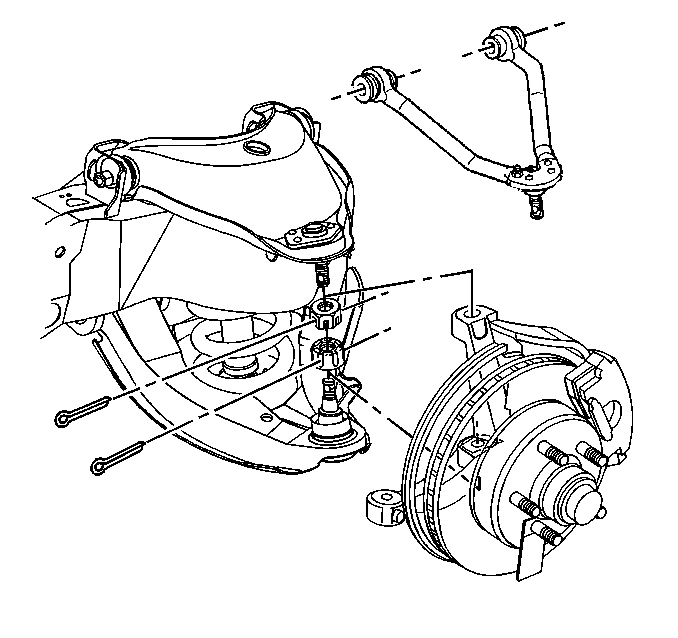
Tighten
Tighten the upper ball joint to the steering knuckle retaining nut to
100 N·m (74 lb ft).

If the hole in the stud is not in line with the slots in the nut, tighten the nut until they are aligned.
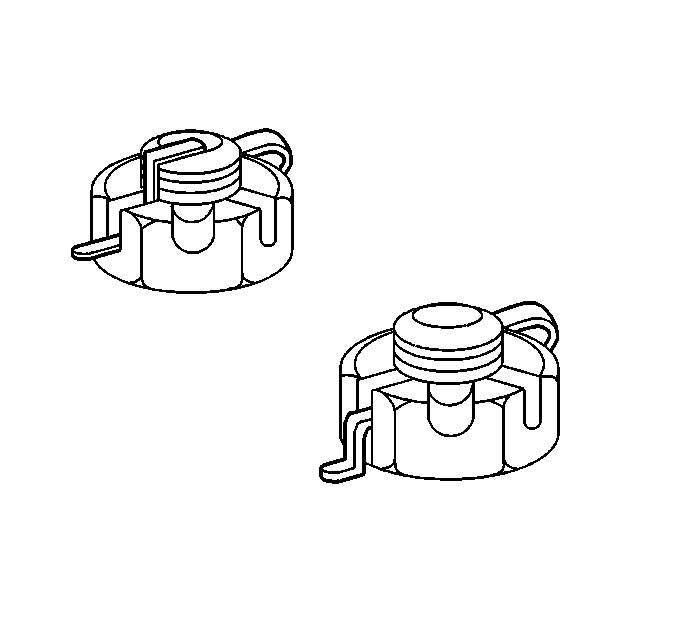
Install the grease fitting, if necessary. Grease the ball joint.

Tighten
Tighten the wheel speed sensor and brake hose bracket retaining nut
to 17 N·m (13 lb ft).
Important: Check the running clearance at all of the suspension components.
